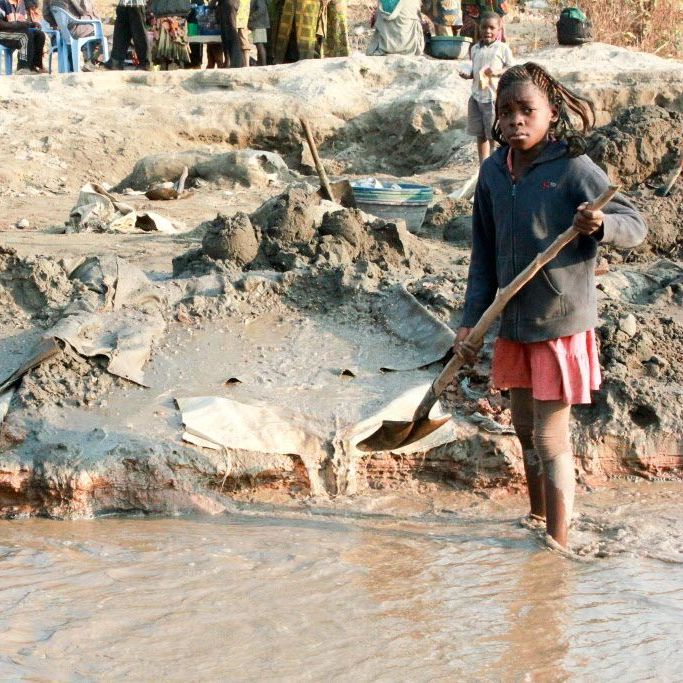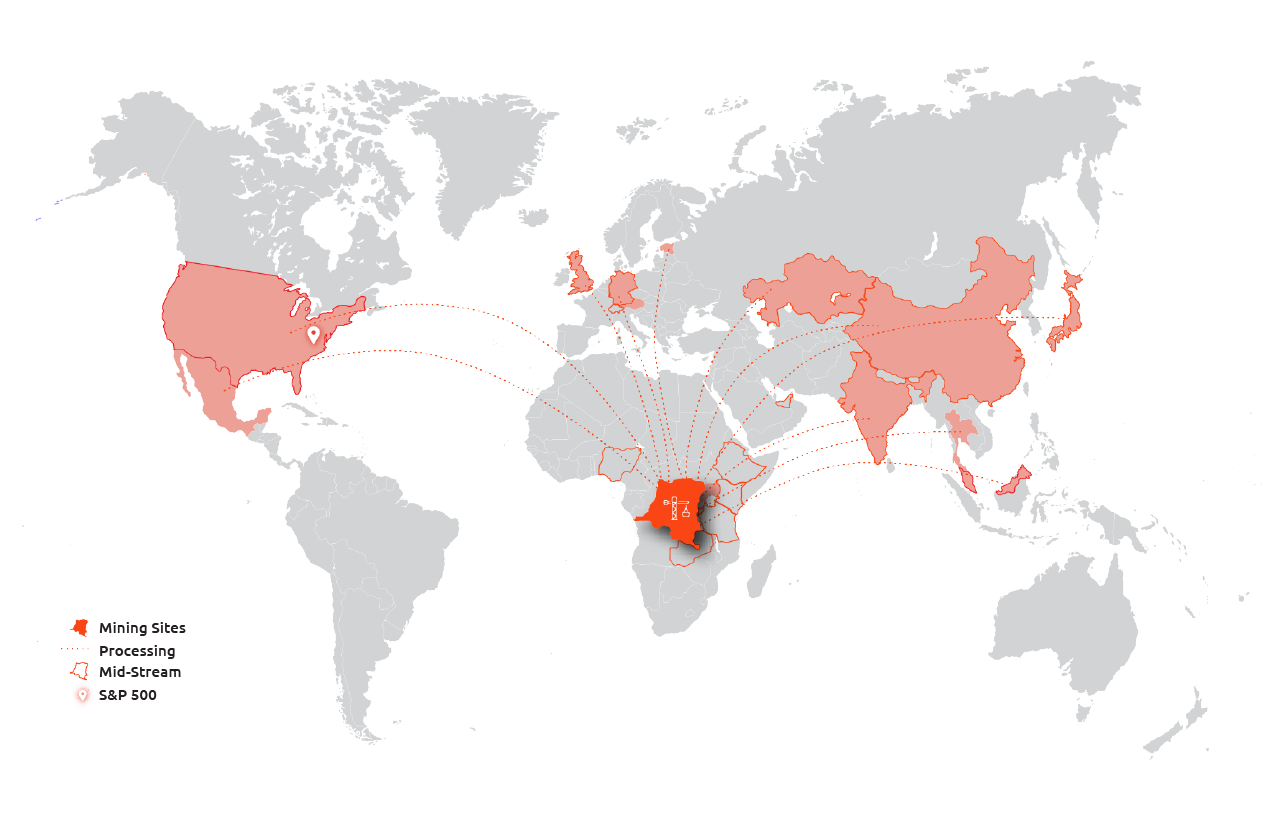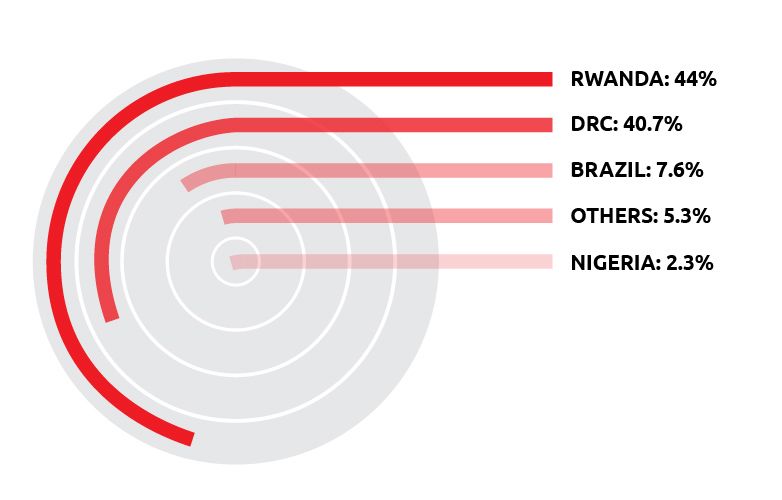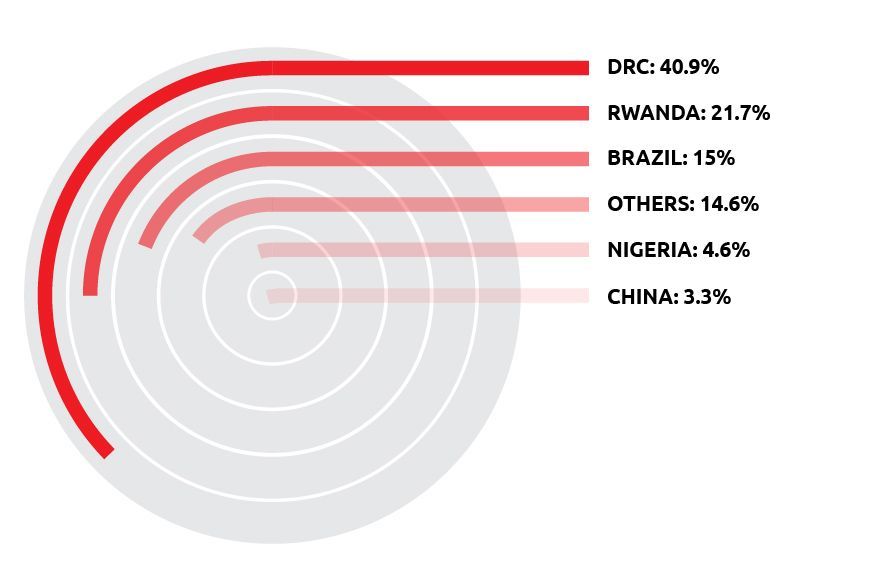Project Tantalus

Photo from World Vision
Mapping the S&P 500 companies to slaves in the Democratic Republic of Congo (DRC) and the metals they are forced to mine.
405,000
People in the DRC at risk of modern slavery potentially connected to S&P 500 companies
"The element that moves the world."
Why Tantalum?
01
A critical mineral for technology
Tantalum is used in various amounts for consumer electronics, medical devices, chemicals, energy, aerospace and more.
02
Small-scale or artisanal mines
Tantalum is mostly mined in small-scale or artisanal mines and there are at least 10,000 artisanal coltan miners at risk in the DRC.
03
Identified as a
conflict mineral
Companies face reputational risk if their supply chain is exposed due to existing laws; however traceability has been difficult due to illicit trade and smuggling.
04
Human rights abuses
Associated with human rights abuses, including child labor and funding armed conflict.
Tantalum Supply Chain
Over 100 companies in the S&P 500 exposed to Tantalum.

Raw Tantalum/Colton Exports by Country in 2023 (metric tons)

Tantalum Production by Country in 2023
(metric tons)

In partnership with ATIN
Project Tantalum is being conducted in partnership with the Anti-Trafficking Investment Network (ATIN) to rank the S&P 500 on exposure and response to human trafficking.
ATIN is the first investment collaborative dedicated to decimating human trafficking.

